SPSS Recode Variable
In this section, we will learn about the Recode function in SPSS. Recode function is located in the Transform menu, and it comes into two varieties Recode into the same variables and Recode into different variables like this:
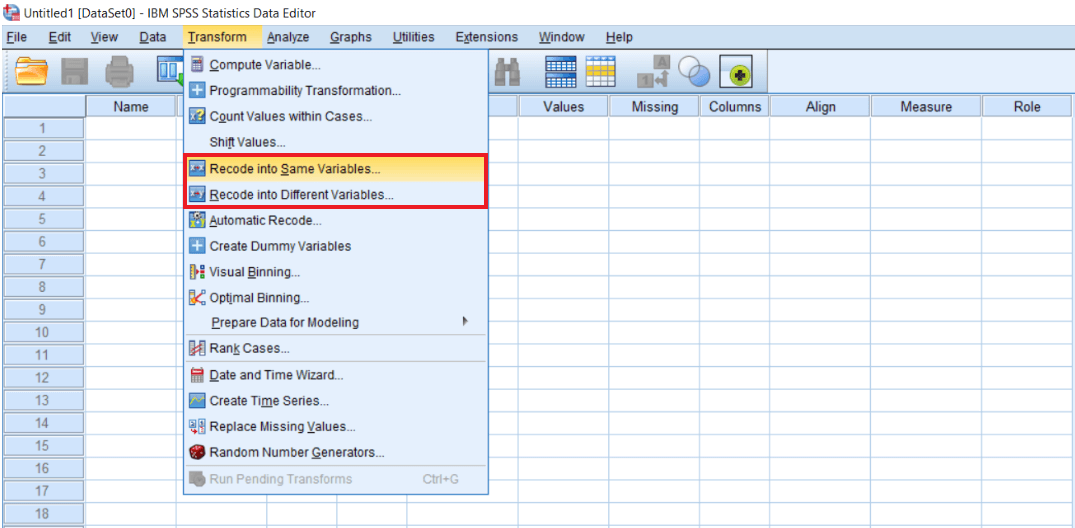
So we will learn when we use these two different functions. Before going into that, we need to understand what recode can do for us. Record is a kind of function available in the SPSS Transform menu, which can help us in recoding the values that we assign to a variable. For example, the following data set has certain variables. Basically, they are the questions items of a scale, and there are 15 questions for measuring the different dimensions of personality.
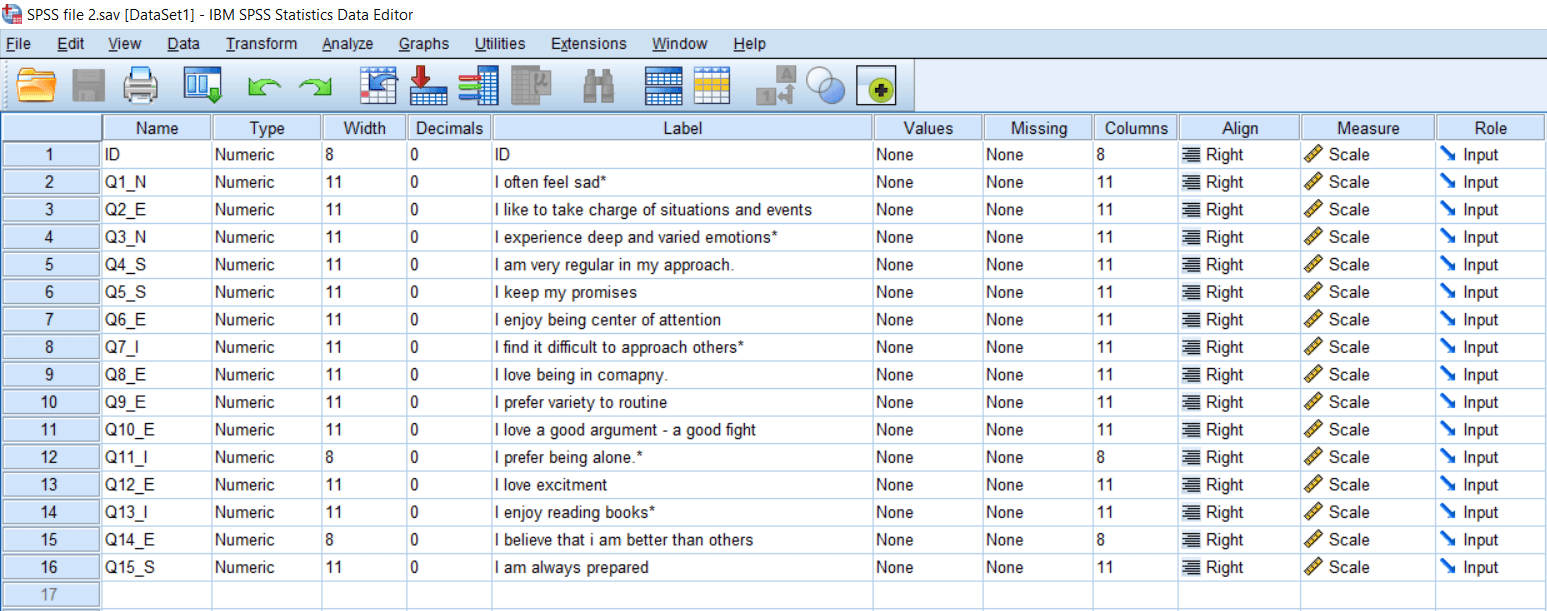
When we click on the Data View option, we can see that all the responses have been scored on the 7 point rating scale.
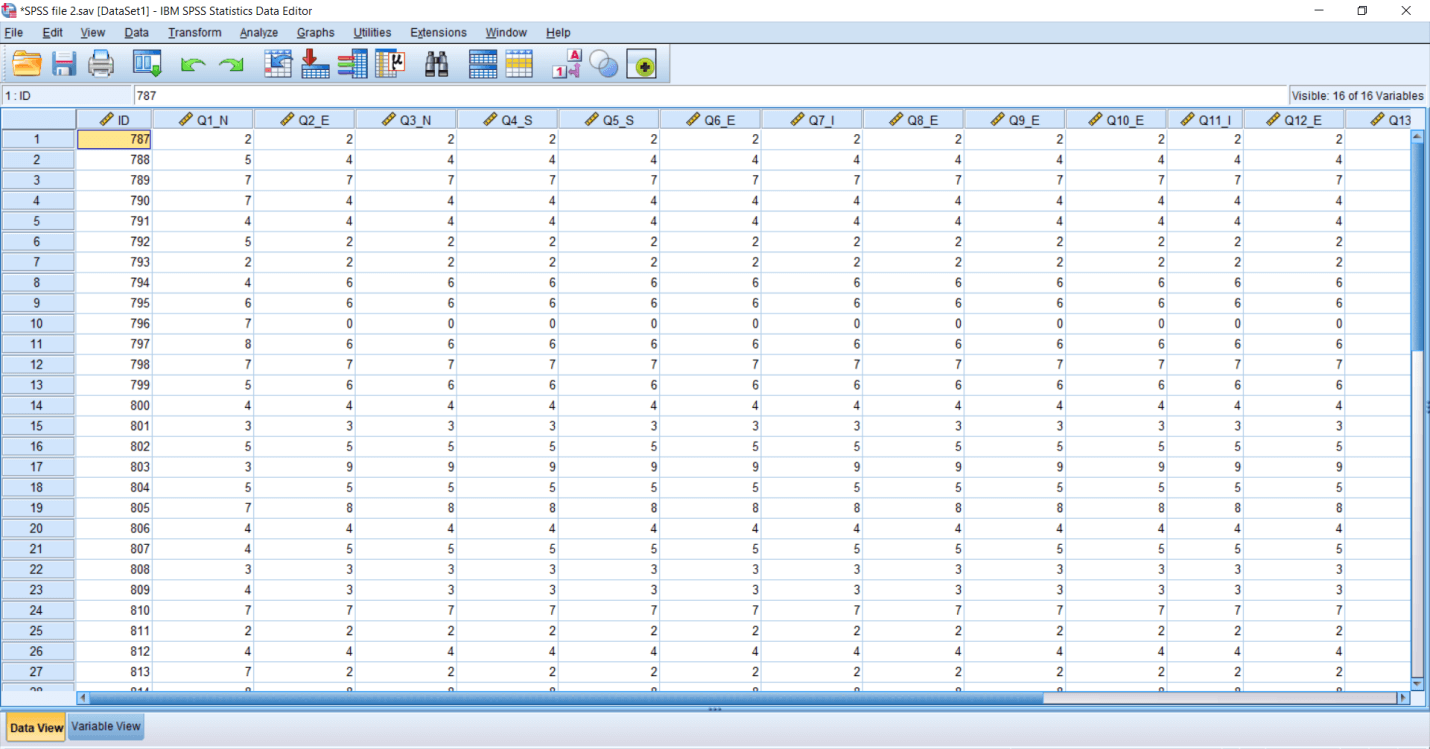
There are 15 items, as shown in the following diagram. The items measure various personality dimensions of the subject like their introversion and extroversion traits, and the extent to their Stability or Unstability. These are the four-measure dimensions, and all these questions measure one of the four dimensions mentioned in the scale. If we want to change the responses or values assigning to a variable, we can use the Recode function. We use the recode function because it is required. If we look at the personality scale, it consists of 15 items.
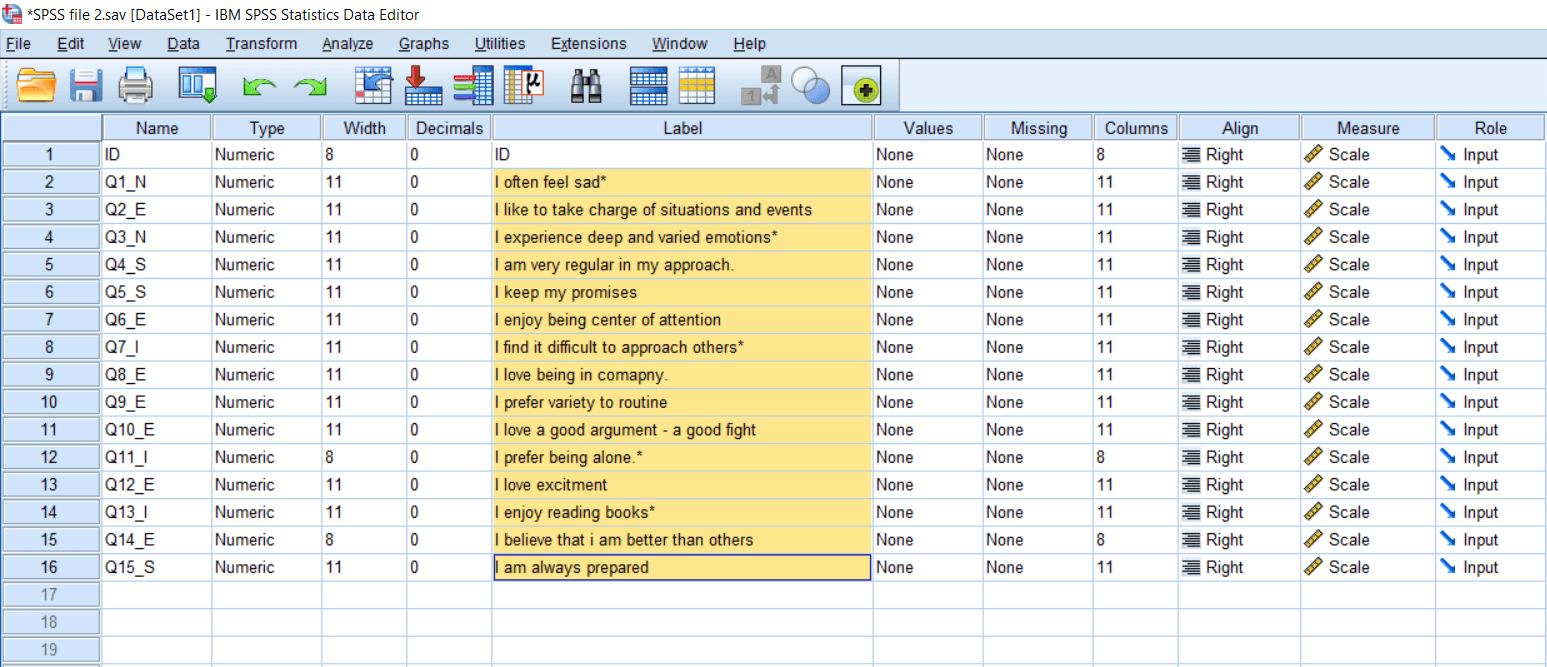
They measure four different dimensions of personality. Some dimensions are positive, and others are negative. For example, in the case of Q1_N, the dimension is Neuroticism. Neuroticism measures the extent to which a person is unstable or the extent of Instability in personality predisposition. For example, I often feel sad or being often sad, or moody is the basic characteristic of Neurotic person or those persons who are unstable by nature.
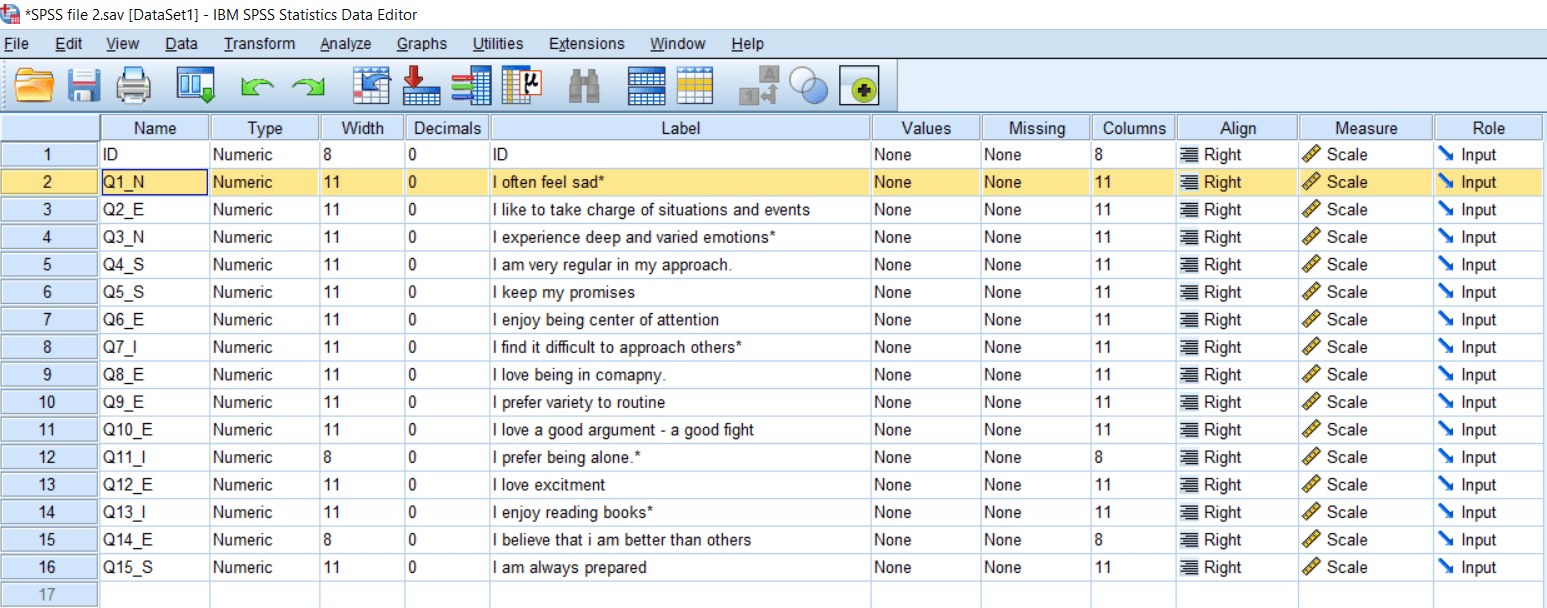
As compared to this, the Stability dimension measures the extent to which a person is stable in his behavior. For example, I keep my promises. This is the characteristic of those people who are stable by nature.
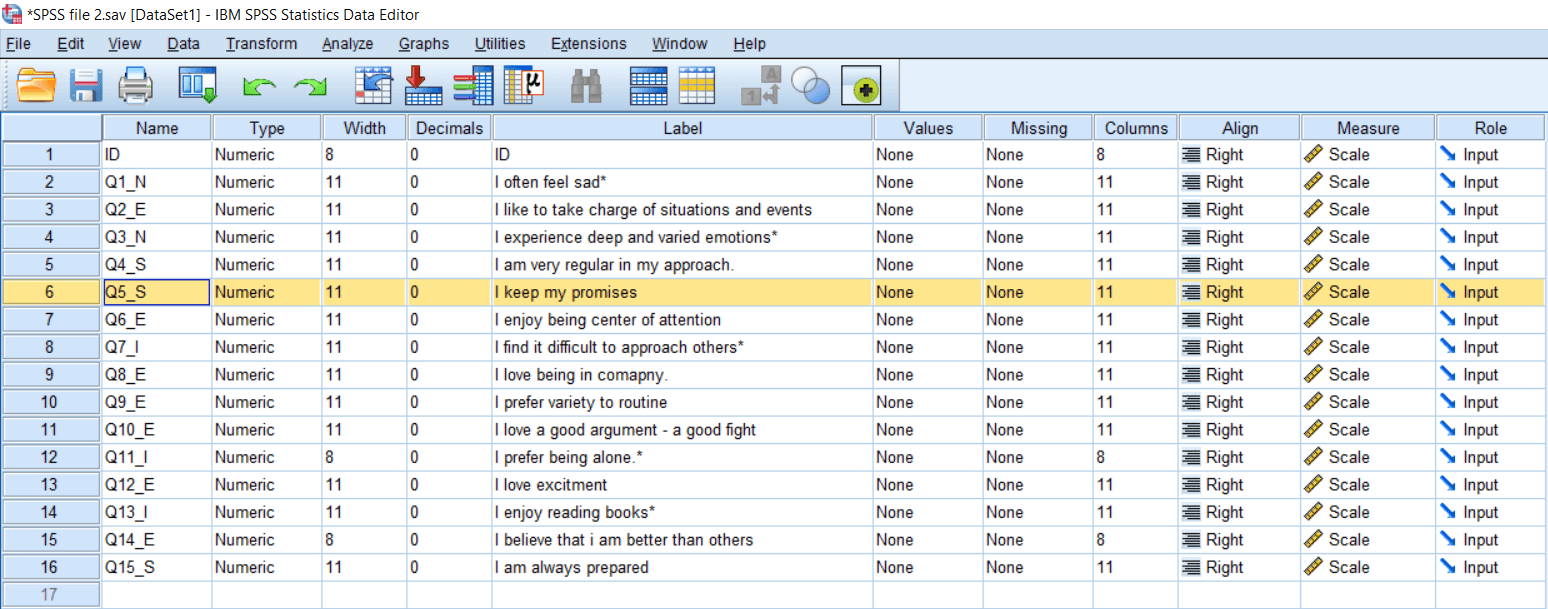
So one dimension is Neurotic Vs. Stability, or we can call it Stability Vs. Instability. The second dimension is Extraversion Vs. Introversion. So it is the extent to which individuals are oriented towards others outgoing or oriented towards themselves. Suppose somebody asks us to find out the total score of the subject on the scale. We know that certain items measure the trades that are negative, for example, Instability or Neuroticism. We want a total score reflecting how positive an individual’s personality is or how negative an individual’s personality is because we are looking for an overall picture. So if we have to calculate the total score of the subject based on these 15 items, we cannot do total as it is because that will not reflect the true score of the individuals either as a positive personality or negative personality.
So for that, we need to reverse score certain items. For example, all those items which are negative or which we consider as negative personality trades not desirable for the workplace like I often feel sad, and I prefer being alone. I often feel alone is part of Introversion. If somebody wants to find out the total score where the desirability of that person should be high at Extroversion and high on Stability and it should be low on Introversion and low on Instability. So for this, a total score on this scale should reflect high Extroversion and high Stability. So for this, we have to reverse score all those questions, which are negative that is measuring Neuroticism or measuring Introversion. All these items for the sake of convenience have been marked by an asterisk (*) at their end.
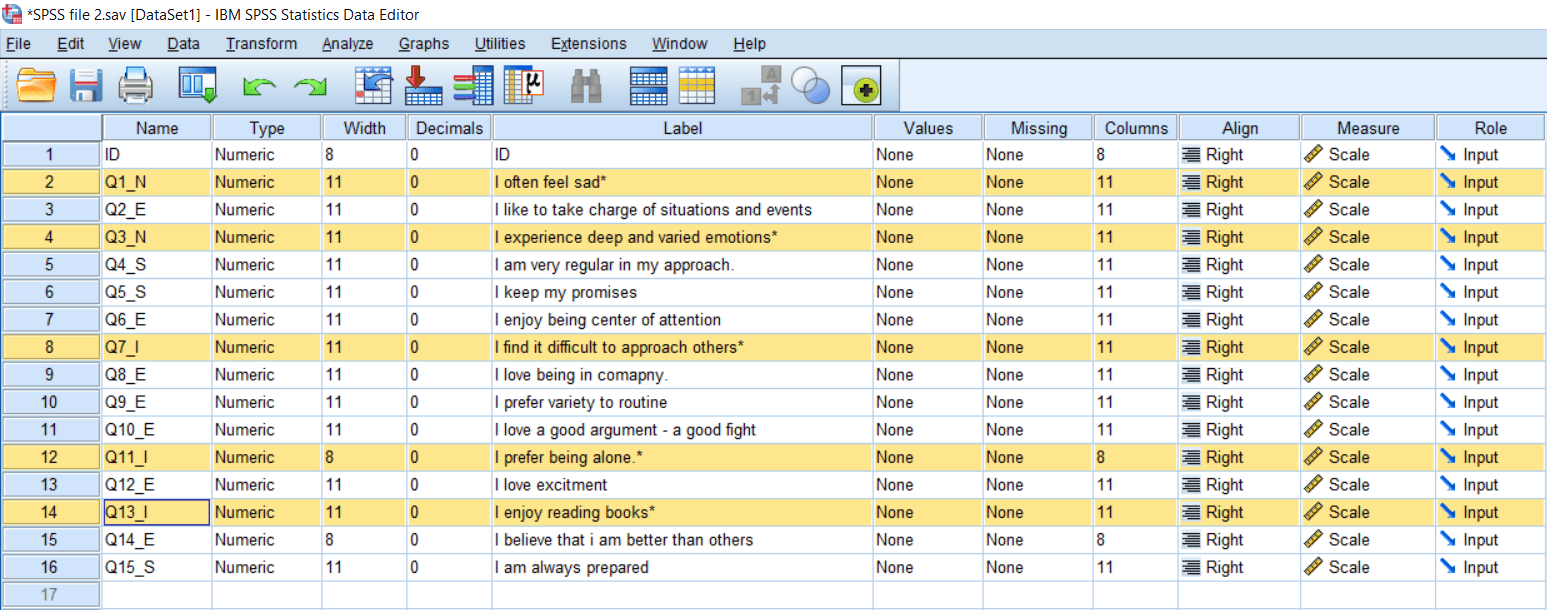
This is the standard practice followed in the scale development exercise. So if we have to calculate the total score of a person first, we will reverse score all these items, which have been marked by an asterisk(*). For reverse scoring, we can take the help of following Recode function.
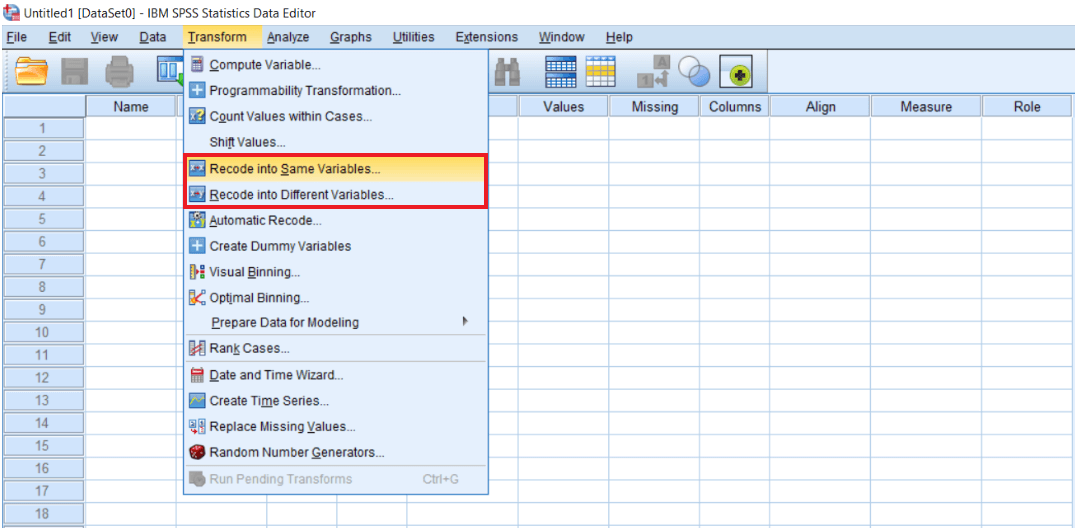
Once the reverse scoring has been done, we can calculate the total score by adding all positively worded items and reverse scoring of the negatively worded items.
